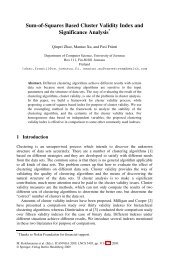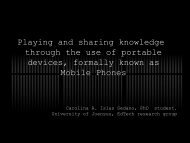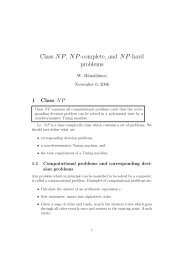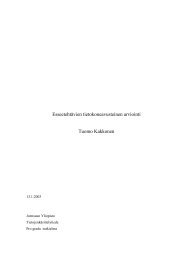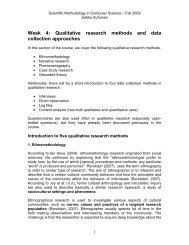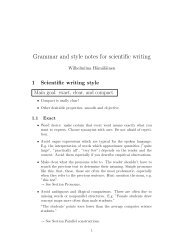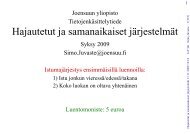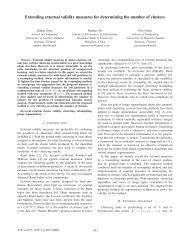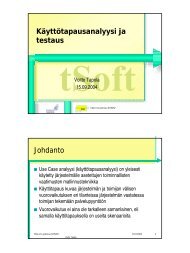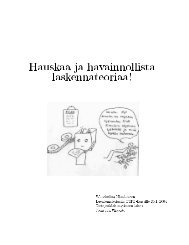Scientific Writing for Computer Science Students - FTP Directory ...
Scientific Writing for Computer Science Students - FTP Directory ...
Scientific Writing for Computer Science Students - FTP Directory ...
You also want an ePaper? Increase the reach of your titles
YUMPU automatically turns print PDFs into web optimized ePapers that Google loves.
70 CHAPTER 4. GRAMMAR WITH STYLE NOTES4.10.5 Combining clausesSay the main message in the independent clauses!clauses only to add details.Use dependentCombining two independent clausesA compound sentence= two or more independent clauses which arecombined by co-ordinating conjunctions or (rarely) by semicolons.• In principle, you can combine several independent clauses, but in practice,combine only two main clauses (unless the clauses have the samesubject which is mentioned only once).• The ideas expressed in the clauses must be closely connected (otherwiseseparate sentences).• The most common co-ordinating conjunctions are and and but.– and just links one idea to another (doesn’t describe the relationship– typical <strong>for</strong> the children’s language and dreams where thingsjust happen). E.g. ”The data is sparse and the model overfits easily.”– but establishes an interesting relationship between the ideas →a higher level of argument. E.g. ”The data was sparse, but themodel did not overfit.” (=”Even if the data was sparse, the modeldid not overfit.”)• Commas? If the clauses have the same subject, then no commas. Otherwiseusually a comma, unless the clauses are very short.4.10.6 Combining clauses by sub-ordinating conjunctionsThe basic <strong>for</strong>m: an independent clause + a sub-ordinating conjunction+ a dependent clause.The most common sub-ordinating conjunctions express1. a chronological order: when, as, as soon as, while, after, be<strong>for</strong>e,until, since



